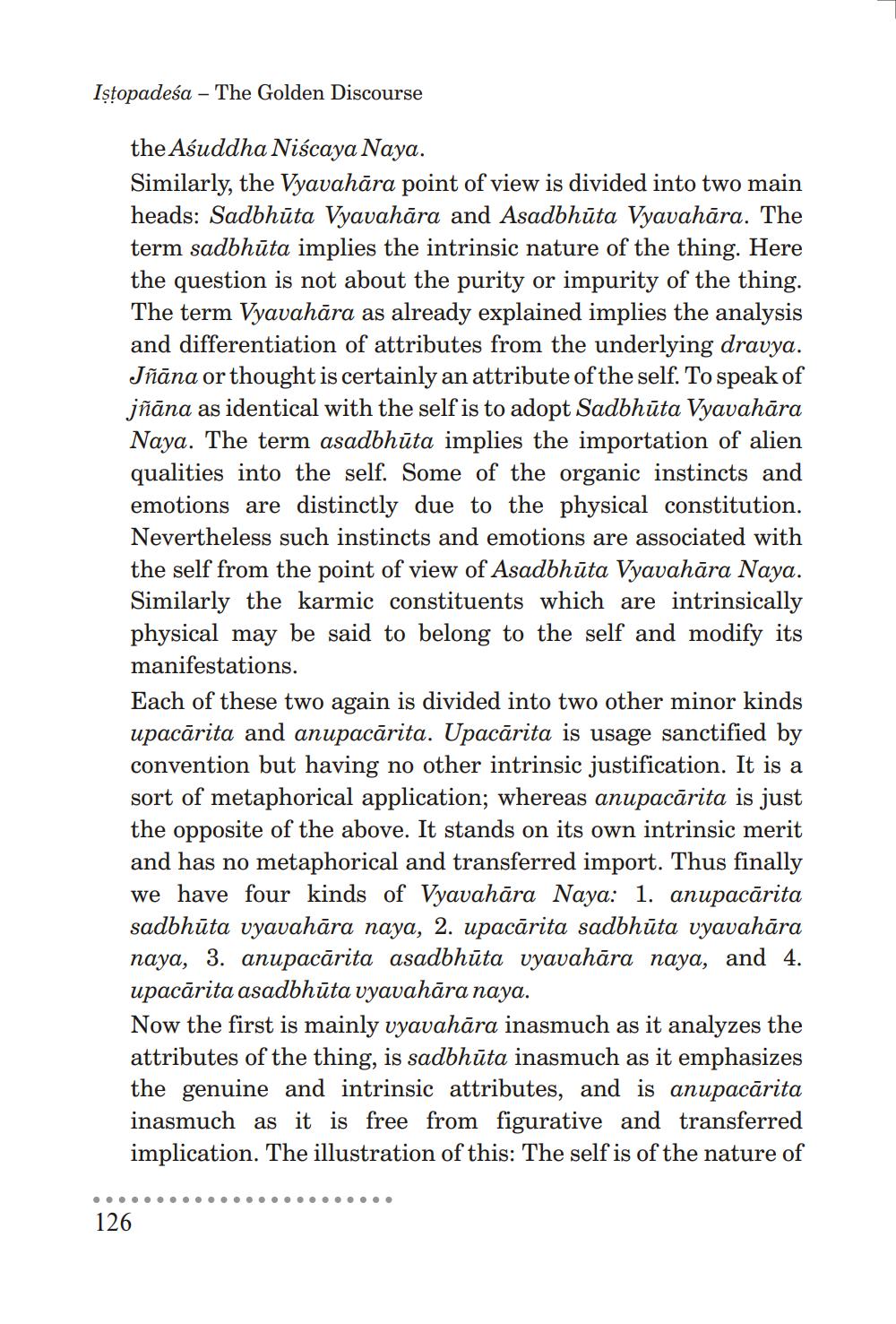________________
Iṣṭopadeśa - The Golden Discourse
the Asuddha Niścaya Naya.
Similarly, the Vyavahāra point of view is divided into two main heads: Sadbhūta Vyavahāra and Asadbhūta Vyavahāra. The term sadbhūta implies the intrinsic nature of the thing. Here the question is not about the purity or impurity of the thing. The term Vyavahāra as already explained implies the analysis and differentiation of attributes from the underlying dravya. Jñāna or thought is certainly an attribute of the self. To speak of jñāna as identical with the self is to adopt Sadbhūta Vyavahāra Naya. The term asadbhūta implies the importation of alien qualities into the self. Some of the organic instincts and emotions are distinctly due to the physical constitution. Nevertheless such instincts and emotions are associated with the self from the point of view of Asadbhuta Vyavahara Naya. Similarly the karmic constituents which are intrinsically physical may be said to belong to the self and modify its manifestations.
Each of these two again is divided into two other minor kinds upacarita and anupacarita. Upacarita is usage sanctified by convention but having no other intrinsic justification. It is a sort of metaphorical application; whereas anupacārita is just the opposite of the above. It stands on its own intrinsic merit and has no metaphorical and transferred import. Thus finally we have four kinds of Vyavahāra Naya: 1. anupacărita sadbhūta vyavahāra naya, 2. upacarita sadbhūta vyavahāra naya, 3. anupacarita asadbhūta vyavahāra naya, and 4. upacarita asadbhuta vyavahara naya.
Now the first is mainly vyavahāra inasmuch as it analyzes the attributes of the thing, is sadbhūta inasmuch as it emphasizes the genuine and intrinsic attributes, and is anupacārita inasmuch as it is free from figurative and transferred implication. The illustration of this: The self is of the nature of
126




